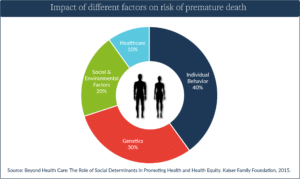Patients, healthcare providers, payers and administrators all have critical tasks that the right health-related data (with appropriate protections and consent) can help them perform better and more affordably. But obtaining access to it requires, among other conditions, data interoperability—that is, the frictionless exchange of data between parties who generate and use it. And the healthcare industry’s progress toward interoperability has been slow.
For one reason, its dominant, Fee-for-Service business model rewards provider care transactions over patient health improvement, and thus discourages innovation toward the latter. For another, data can be a competitive advantage, so organizations aren’t keen to share it without promise of some greater, compensating return on investment. Then there’s the intrinsic difficulty of achieving interoperability, which Microsoft Health Chief Architect Josh Mandel recently described as “an overlapping set of technical and policy challenges, from data access to common data models to information exchange to workflow integration.”
But undeterred by these challenges, Microsoft and five other tech giants with origins outside healthcare—Amazon, Google, IBM, Oracle and Salesforce—recently pledged to collaborate in breaking down barriers to interoperability within the industry. If true data interoperability in healthcare is possible, these companies could be a driving force in making it happen. After all, outside healthcare they have enabled data flow on a massive scale in order to connect consumers and businesses, link online and offline transactions, create seamless user experiences across computing devices, and more.
Much of the discourse around interoperability in healthcare focuses on data-sharing among payers, providers and their patients. So a big question in my mind is whether or how the companies making this pledge aim to facilitate data-sharing necessary for addressing patients’ health-related social and environmental needs.
Recognizing that these contribute to an estimated 20% of early deaths, and facing continued pressure to shift from fee-for-service to value-based care payment models, providers are increasingly seeking to discover and help individuals address them.
This usually requires partnerships with community organizations that can help providers identify and address issues like homelessness, food insecurity, or lack of reliable transportation to healthcare appointments. It also therefore demands data flow between organizations both within and outside the traditional healthcare ecosystem.
Organizations collaborating to address patients’ health-related social and environmental needs face other challenges beyond data flow—most fundamentally, identifying and refining interventions that work in a financially sustainable and scalable way. So is data interoperability between them even possible to pursue, while its precise applications may be uncertain? That’s a question for the tech giants. Regardless, they should ultimately be thinking beyond the healthcare industry if they want to maximize their impact on health outcomes and care costs.




